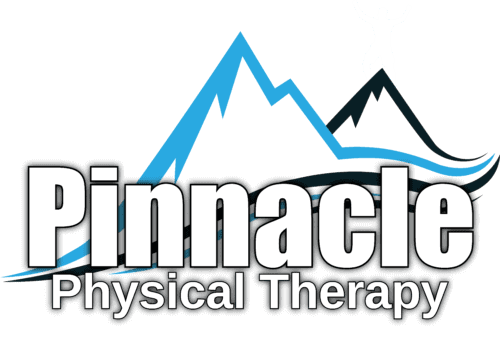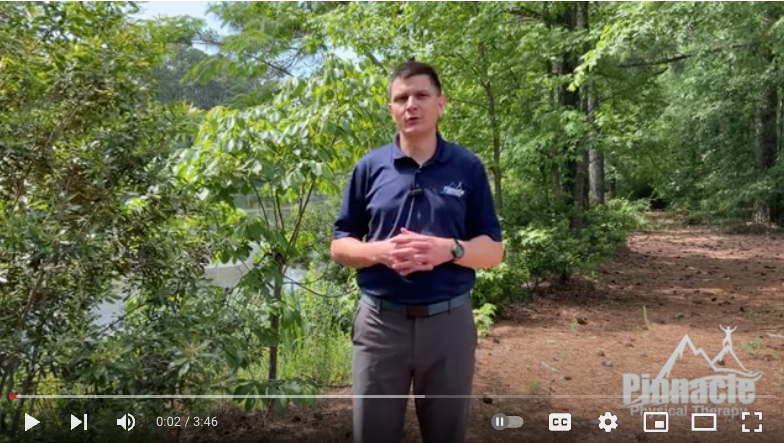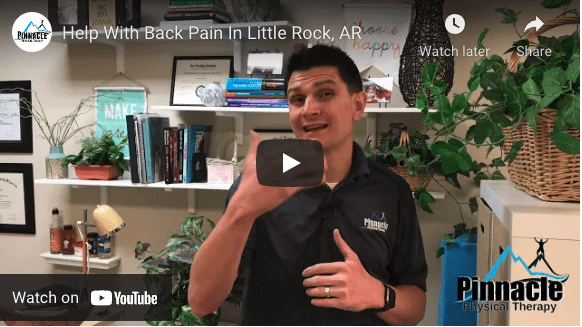You have seen a physician and they told you that you have the dreaded “Spinal Stenosis.” What exactly does that mean? What are your options? Are you going to get better? Low back pain is a global pandemic. It affects people of all races, age ranges, educational levels, and socioeconomic status. If treatment for low back pain, which includes spinal stenosis were easy or straight forward, it would not be costing our health care system billions of dollars a year. In this article I am going to be talking about spinal stenosis and answer some questions you may have. What is spinal stenosis? What are spinal stenosis treatment options? What can I do to help myself if I have been diagnosed with spinal stenosis? Let’s get started!
Spinal stenosis by definition is where there is a narrowing of structures in the spine. It can create pressure on nerves and arteries which manifests as pain in the back and down the leg or legs when a patient is standing or walking for prolonged periods. Spinal stenosis pain is often relieved by sitting.

What is important to remember is that spinal stenosis is a normal aging process of our spines. Despite its common occurrence as we age, how the stenosis effects each patient is variable. Next, we will move on to discussing your options.
When dealing with spinal stenosis there are treatment options that help the patient address their functional deficits. Let’s start with the conservative options. Physical therapy has shown positive outcomes when compared to surgery. One study that compared surgery to a flexion based therapy program found that at 2 years post intervention, there was no statistically significant difference between the surgical group and the conservative therapy group.1 There is also evidence that being very specific with the interventions that are used in PT to treat the presentation of a patient shows better outcomes. Manual therapy, which is when the therapist uses their hands to perform skilled care to the body, along with exercise, lifestyle modifications, and education shows great changes in a patient’s level of perceived disability.
Lumbar fusion is the surgical procedure of choice when it comes to dealing with spinal stenosis. Lumbar fusion is when the surgeon permanently connects two or more vertebrae in your spine, eliminating motion between them. This helps to reduce pain and hopefully improve your function. There are inherent risks with surgery which include infection, improper healing, and the need for additional surgeries. Although operative deaths are uncommon, early complications occur in up to 18% of patients who undergo fusion surgery in randomized trials.2,3 I am not going to touch on injections or other minimally invasive procedures in this article. I will touch on that in another write up.

The last question one might have when dealing with lumbar spinal stenosis is, “Will I get better?” The evidence is clear that acute low back pain, meaning back pain that recently occurred will resolve itself in a short period of time with the recommendation to stay active. It is not uncommon for patients with Lumbar spinal stenosis to have had pain for longer periods of time. When dealing with chronic pain (pain lasting longer than 3 months) it is imperative to look at the whole person. A term in physical therapy called regional interdependence looks at the areas around the area of pain to see if those areas are functioning optimally. How are your hip joints doing? If they are stiff and weak, your low back has to do more work. How is your thoracic spine (upper back) moving? If it is stiff, the low back has to do more work. It is clear that a holistic look at the individual is critical to get a good outcome. This even includes looking at their psychological well being, their exercise and stress reduction habits, and even their nutrition. It is time we start to expect more from our medical providers in looking at us as whole people. Medication is not always the answer, surgery is not always the answer, physical therapy alone is not always the answer.
I would like to extend an offer to my readers. I offer a free discovery visit to hear about your limitations and goals. Let me use my interdisciplinary team of providers in the community to look at you holistically. I can set up this meeting with you in person at my office or over the phone. If you are interested call or text me at 501-529-2010 or shoot me an e-mail at [email protected].
Thanks and here’s to helping you reach your PINNACLE!
Dr. Murphy
References:
- Deyo RA, Mirza SK, Martin BI, Kreuter W, Goodman DC, Jarvik JG. Trends, Major Medical Complications, and Charges Associated With Surgery for Lumbar Spinal Stenosis in Older Adults. JAMA.2010;303(13):1259-1265.
- Brox JI, Sorensen R, Friis A, et al. Randomized clinical trial of lumbar instrumented fusion and cognitive intervention and exercises in patients with chronic low back pain and disc degeneration. Spine 2003;28:1913–21.
- Fritzell P, Hagg O, Wessberg P, et al; Swedish Lumbar Spine Study G. 2001 Volvo Award Winner in Clinical Studies: lumbar fusion versus nonsurgical treatment for chronic low back pain: a Multicenter Randomized Controlled Trial From


